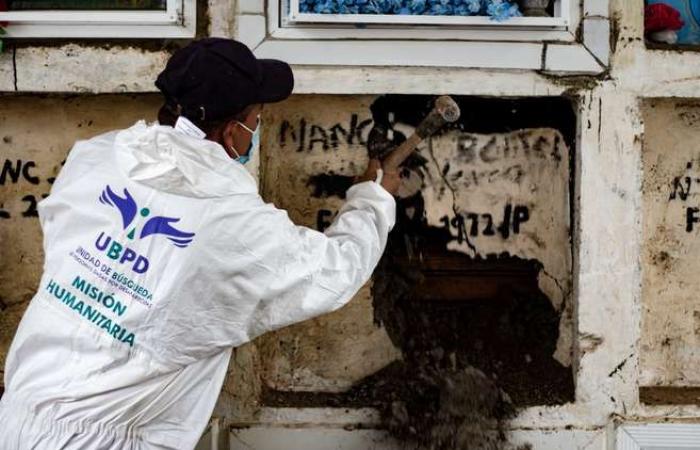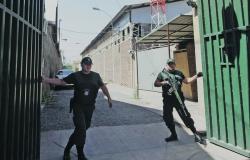Forensic and technical personnel exhume the bodies in the Apartadó cemetery.
Photo: UBPD
An exhumation in the Apartadó cemetery, Antioquia, would close years of searching for families who suffered forced disappearance due to the armed conflict. This Monday, the Search Unit for Persons Reported Missing (UBPD), announced the recovery of the skeletal remains of 16 people who, apparently, were kidnapped and disappeared in Urabá, Antioquia and Choco, in the last decade of the conflict.
The task of entering the cemetery and studying bone by bone was developed between the UBPD, the Special Jurisdiction for Peace and the Institute of Legal Medicine to try to offer justice to the inhabitants of a region that, according to the Truth Commission, suffered from differentially the ravages of war. This joint work between the three entities was the first of its kind in which the institutions try to offer some response to the more than 100,000 forcibly disappeared people reported in Colombia.
Urabá was, due to its proximity between Antioquia and Chocó and its passage to the Darién Gap, one of the epicenters of the conflict. According to the findings of the Court of Justice and Peace, the region has suffered the ravages of war, at least since the late 1980s. The Victims Unit records that there are at least 344,000 victims of the war in Urabá; most of them who suffered forced displacement.
While the JEP listened to and compared testimonies from armed actors about possible bodies and mass graves in Apartadó and, in general, in Urabá, the UBPD studied the clues and complaints from people to try to find their whereabouts. For its part, Legal Medicine offered the technical and forensic personnel to carry out the exhumation and identify these people.
The intervention was due to the findings that the JEP found regarding macrocase 04, which dates back to the wave of violence that Urabá has experienced without any pause since 1980. Currently there is a record of new armed groups, such as the Clan del Golfo or “The Urabeños.”
Following the clues
Although the intervention in the cemetery was a pending task of the State for several months, it was not until June 10 that the institutions exhumed it. For four days the JEP, UBPD and Legal Medicine followed the reports they had at hand to identify which skeletal remains corresponded to the reports of those who were missing.
According to the Search Unit, apparently the bodies of these people correspond to victims who were disappeared in Urabá, Córdoba and Antioquia between 2007 and 2016.
“Some of the recovered bodies were already fully identified, but were never claimed by their families because they were not aware of the fate of their loved ones.or they never approached the authorities because of the fear they felt about the armed conflict,” said the Search Unit.
The day of identification of the remains also served to bring justice closer to other victims in the region who remained silent for years. As they progressed with the exhumation, About 100 people came to the cemetery to report the forced disappearance of one of their relatives.
The search figures
Last week, Luz Janeth Forero, director of the Search Unit, gave the balance that the entity she directs has achieved after the signing of the Peace Agreement. According to Forero in front of the UN Security Council in New York, there are at least 111,000 people reported as forcibly disappeared. However, despite the State’s efforts to find them, the figures still leave a balance in the red.
Forero explained in his speech that 1,569 bodies whose whereabouts were unknown have been found. In addition, he said that 286 people have been lucky enough to have a worthy delivery from their relatives.
The director also stressed that the Unit has managed to find “9,058 possible places where those bodies were disposed (buried or missing).” In addition to finding 30 people alive and ensuring they are reunited with their families after decades of being left without answers about them.
“If we could find at least one missing person left behind by the armed conflict every day, it would take us more than 300 years to find them. This enormous dimension imposes great challenges on us related to the complexity and variability of the dynamics of occurrence,” said Forero.
Do you know what people-centered justice is? Visit Inclusive Justice of The viewer






